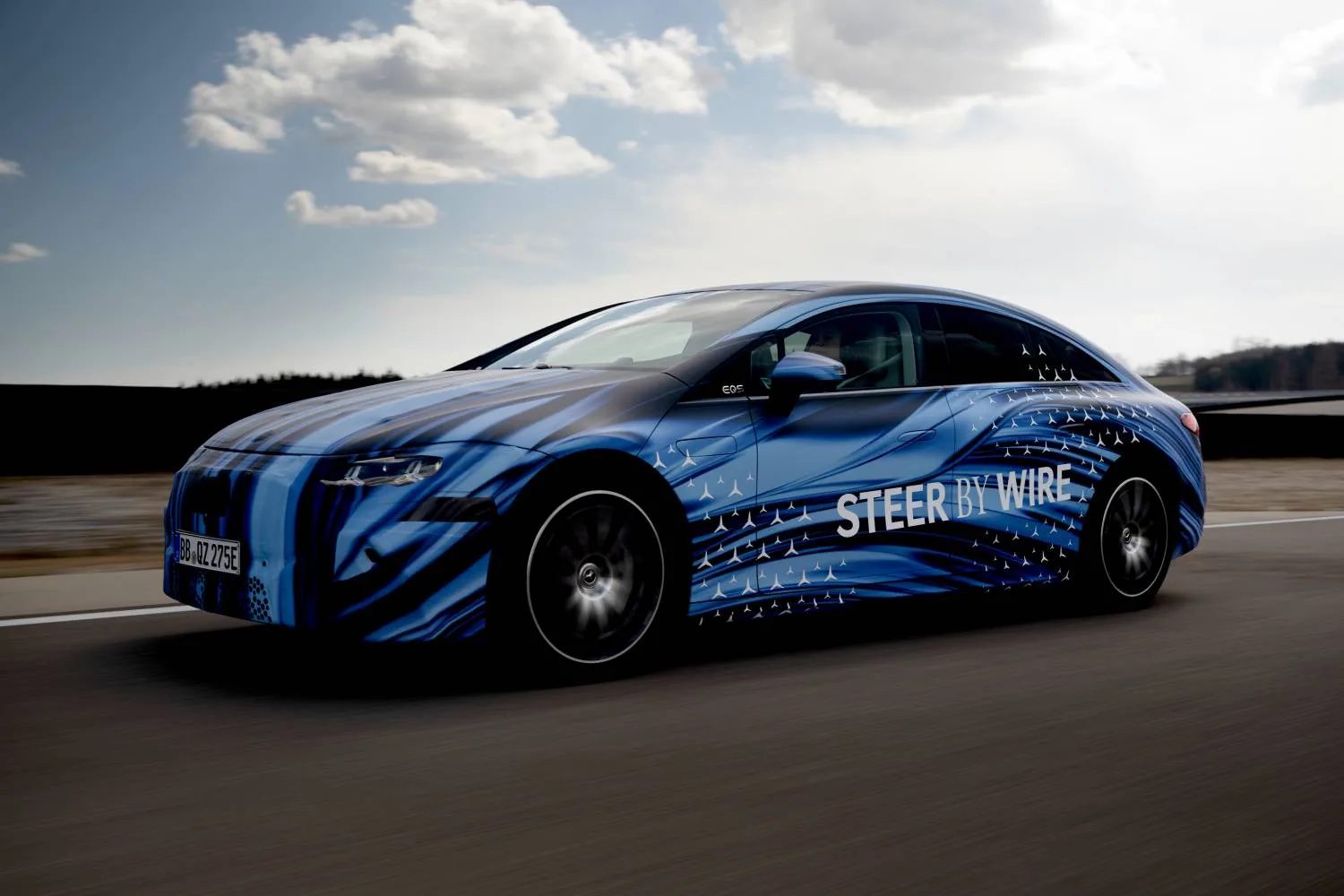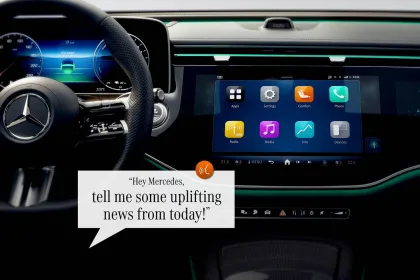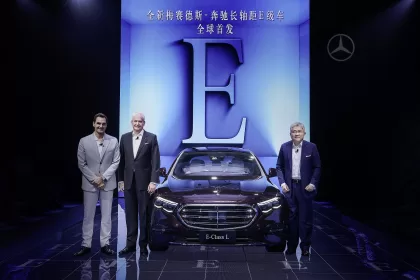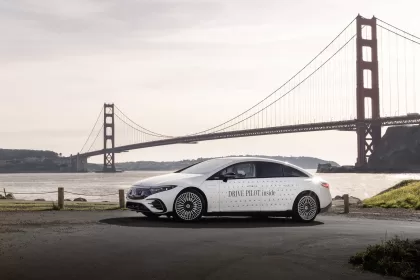- New steering feel for an unparalleled customer experience
- Responsive on the open road, agile in the city, parking without re-gripping the steering wheel
- Superior driving characteristics and perfect interaction with rear-axle steering
- Flatter steering wheel design and overall greater freedom in interior design
- Adaptable to customer preferences, architectures and vehicle variants; innovative gaming possibilities
- Fall-back functions at vehicle level for maximum safety
- Extensive testing on test benches and in traffic
A steering wheel is much more than just a car component – it connects the driver with the road via the tyres. The steering wheel provides feedback on driving behaviour, enables the driver to feel uneven road surfaces and, in the past, was the physical cranking mechanism for manoeuvring into parking spaces. A new era of vehicle operation is about to begin for Mercedes‑Benz customers – the company will be the first German car manufacturer to offer a production vehicle with steer-by-wire from 2026. This technology does not require a mechanical connection between the steering wheel and the front wheels. Instead, the driver’s steering requests are transmitted quickly and directly via an electrical cable, i.e. “by wire”.
The completely new steering feel provides an unparalleled customer experience with a wide range of advantages in everyday driving: handling is better and manoeuvring and parking become even easier. This is because steer-by-wire can further reduce the effort required and there is no longer a need to re-grip the steering wheel while parking.
“Steer-by-wire is another big step towards the mobility of tomorrow, and we’re proud that we will be launching such a system in 2026. The technology enables a unique customer experience that goes far beyond steering alone. In combination with SAE Level 3 conditionally automated driving, it will enable an even more immersive entertainment experience in the medium term. That’s because the flat steering wheel provides a better view of the display when streaming your favourite show, for example.”
Markus Schäfer, Member of the Board of Management of Mercedes-Benz Group AG. Chief Technology Officer, Development & Procurement

The suspension specialists can choose the steering ratio variably and adapt it flexibly to different situations. This enables the simultaneous optimisation of driving characteristics that were previously in conflict with one another – permitting, for example, an even better combination of sportiness and comfort. Likewise, it can bring further increases in directional stability and lateral agility, which is also thanks to the perfect interaction with the rear-axle steering (with a steering angle of up to 10 degrees). Vibrations caused by uneven road surfaces, which were previously transmitted to the driver via the steering wheel as disturbances, can now be almost completely prevented.
The potential for individualisation is high through adaptation of the electronic steering to customer preferences. Individual brands or certain models within a series can be given different steering characteristics.
Steer-by-wire also creates new potential in the design of new architectures by decoupling the steering wheel and steering gear. An additional future potential benefit of the technology is the opportunity for immersive gaming when the driver stops for a break.
Furthermore, steer-by-wire leads to more flexibility in interior design: the steering wheel can be flatter, which results in a more spacious feel and a better view of the driver’s display. It also makes getting in and out of the car easier because the flattened underside of the steering wheel creates more room. In combination with future conditionally and highly automated driving systems, the driver could have a new, even more relaxed position in the long term.
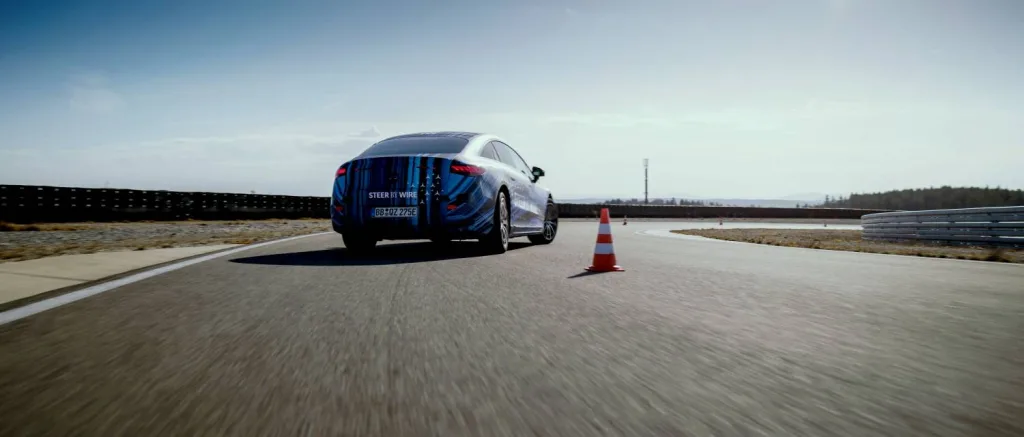
The functionality of steer-by-wire in detail: depending on the driving speed and situation, an actuator on the steering wheel (steering feedback unit; SFU) sends the driver’s steering signal to the steering rack (steering rack unit; SRU), which steers the wheels. The SFU also generates the steering feel typical of Mercedes‑Benz. Since the mechanical decoupling of the steering wheel and wheels eliminates steering torque, the tyre-road contact is calculated on a model-by-model basis with the help of the restoring forces of the steered wheels.
The new steer-by-wire system from Mercedes-Benz has already completed more than one million test kilometres on test benches. On top of that is a similar number of test kilometres on proving grounds and in the validation of complete vehicles in road traffic. In line with its high safety standards, Mercedes‑Benz relies on a redundant system architecture in addition to high-precision sensors and high-performance control units. This means that there are basically two signal paths and thus twice the number of actuators required, as well as a redundant on-board data and power supply. This always ensures steering ability. Even in the most unlikely event of a complete failure, lateral guidance is still possible thanks to rear-axle steering and targeted wheel-specific braking interventions via ESP®.
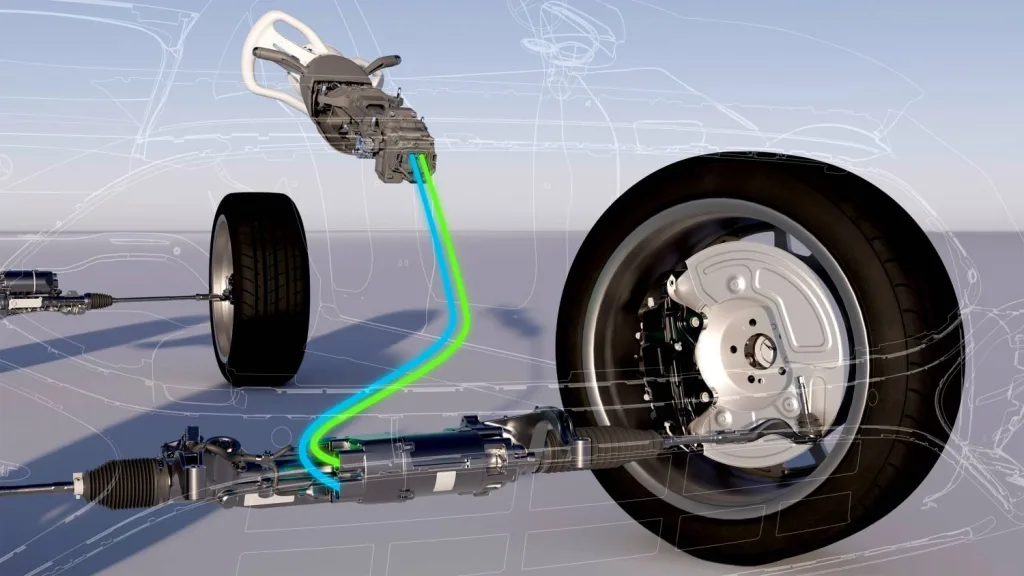
The wheel keeps turning: steering and steering-wheel innovations from Mercedes‑Benz
The world’s first automobile did not have a steering wheel. Carl Benz’s Patent Motorwagen from 1886 was equipped with a steering crank. At that time, people were used to carriages and pulling on the reins to direct the horses in the desired direction. It was not until 1894 that the automobile got a steering wheel. It celebrated its premiere on a journey from Paris to Rouen. The French engineer Alfred Vacheron had equipped his Panhard & Levassor vehicle, which was powered by a Daimler engine, with one. Since then, there have been many innovations in steering systems and steering wheels at Mercedes-Benz:
- 1893: Premiere of kingpin steering in the Benz Victoria. Compared to turntable steering from carriage construction, the risk of tipping over in curves was significantly reduced.
- 1902: In the Mercedes‑Simplex model family, the steering wheel was already equipped with levers. They were used to adjust important engine functions such as ignition timing and mixture formation.
- 1920s: A ring was integrated into the steering wheel for operating the horn – an early system of car-to-X communication, so to speak.
- 1958: The 300 (W 189) model, known as the “Adenauer Mercedes”, was the first Mercedes‑Benz automobile with power steering as an optional extra.
- 1967: From August, Mercedes‑Benz equipped all passenger cars with a telescopic steering column and impact absorber in the steering wheel – a milestone in occupant protection.
- 1976: The new safety steering system with deformable corrugated tube was launched in the W 123 series.
- 1990s: Mercedes-Benz began the gradual changeover to electric power steering. These systems used electric motors for steering assistance, which reduced the effort required and increased energy efficiency.
- 1996: The F 200 Imagination research vehicle with sidestick control celebrated its premiere.
- 1997: The F 300 Life Jet research vehicle had an aircraft-style control horn.
- 2001: Thanks to active camber adjustment of the wheels, the F400 Carving research vehicle appeared to lean into curves.
- 2009: The F-Cell Roadster was controlled by a joystick.
- 2020: The optional rear-axle steering of the S-Class significantly improved manoeuvrability and vehicle dynamics by actively involving the rear wheels in the steering movements.
- 2022: The DRIVE PILOT system for conditionally automated driving was initially launched in Germany. The S‑Class with DRIVE PILOT (optional) has redundant steering and braking systems as well as a redundant on-board electrical system.







